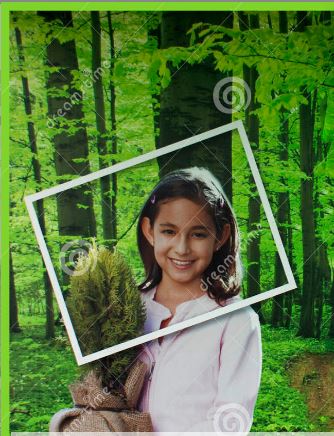Picture an innocent, 7-year-old girl being led to an unfamiliar room. She is made to lie down, her underpants are removed, and a piece of her is cut away; familiar hands around her upholding an age-old tradition.
Perhaps she is in pain. Perhaps she is not. She might feel betrayed, scared, angry, or upset. She might want to run away from the people who are albeit familiar to her, but who have put her in an extremely traumatic situation.
Now picture this same girl once again, made to lie in a an equally unfamiliar room, her underpants removed, her private parts probed by a doctor, who is looking for the scar from the piece that was cut away from her; these concerned hands are trying to build a case to condemn the ones who caused her the original pain.
The girl is once again in pain, but this time it may not be just a physical pain. She is again angry, scared, and confused. And this time, she probably wants to run back to those who are familiar to her, to save her from the trauma of reliving that memory.
The above two scenarios sadly highlight the unfortunate situation that innocent Bohra girls in the US are reportedly in. The girls are possibly feeling trapped, fearful, and vulnerable, because once again they are being forced to relive their trauma of undergoing Khatna.
Recently, Female Genital Cutting or Khatna prevalent in the Dawoodi Bohra community came onto the federal radar in the US because of the arrest of a doctor associated with the practice in Detroit, Michigan. This arrest was followed by a few more arrests leading to subsequent intervention by Michigan’s Child Protection Services who reportedly picked up children for further questioning.
While we need law to make clear that FGC is a human rights violation, and we need legal aid to further efforts towards preventing FGC from occurring in the first place, subjecting a child to a double scrutiny of sorts may not be the best practice if we keep the interests of the child in mind.
For instance, one has to understand that Bohra-style Khatna can be difficult to establish in a medical examination, because Type 1 or Type 4 (which Bohras typically perform) do not necessarily leave physical scars. The girl may have lost a thin layer of her prepuce, or she may have been pricked, slit or rubbed, in which case subjecting them to medical check-ups is not going to prove anything, and may, in fact, cause them trauma when previously they may not have been particularly traumatized.
Additionally, carrying out a witch hunt on all the mothers, possibly separating the girls from their parents, and asking for a ‘permanent termination’ of rights to parenting, are all methods that might force the Dawoodi Bohra community into believing that they are being targeted unfairly, and these actions might make them distrustful of law enforcement officials.
Moreover, the child might view the authorities trying to protect her as her worst enemy, because they separated her from her parents and everything that is comfortable and familiar to her. She might also feel pangs of guilt if her testimony leads to her mother’s arrest. After all, no child wants to be the reason for a family’s disruption.
There is no doubt that the US government is doing exceptionally well in investigating the case, and ensuring that the laws of their land are rightfully upheld. Nevertheless, Sahiyo does feel that there are certain realities, which if understood and implemented correctly, could make the process of serving justice less painful for the child. For instance, what could be explored is how to gain insight around culturally appropriate and sensitive forms of outreach from the people and agencies who are knowledgeable in working with the community.
Since its inception, Sahiyo’s philosophy has been to engage the members of the community and seek their help to end this harmful practice. So we ask now, could an alternate approach be found that acknowledges Khatna as a harmful tradition that must be discontinued, but simultaneously recognizes that parents’ intentions for continuing it are not necessarily malicious? Or, could there be a more educative, community-involved approach to tackling FGC which recognizes it as a social norm that unfortunately has been passed down through generations of a community? Could state-organized counseling sessions for the parents and children be an alternative to punitive punishments?
We ask these questions because we acknowledge that to truly end FGC in the Dawoodi Bohra community, we must find methods that will not cause further trauma for the child, but at the same time, continue to move the community forward towards abandoning this undesirable and harmful practice.

